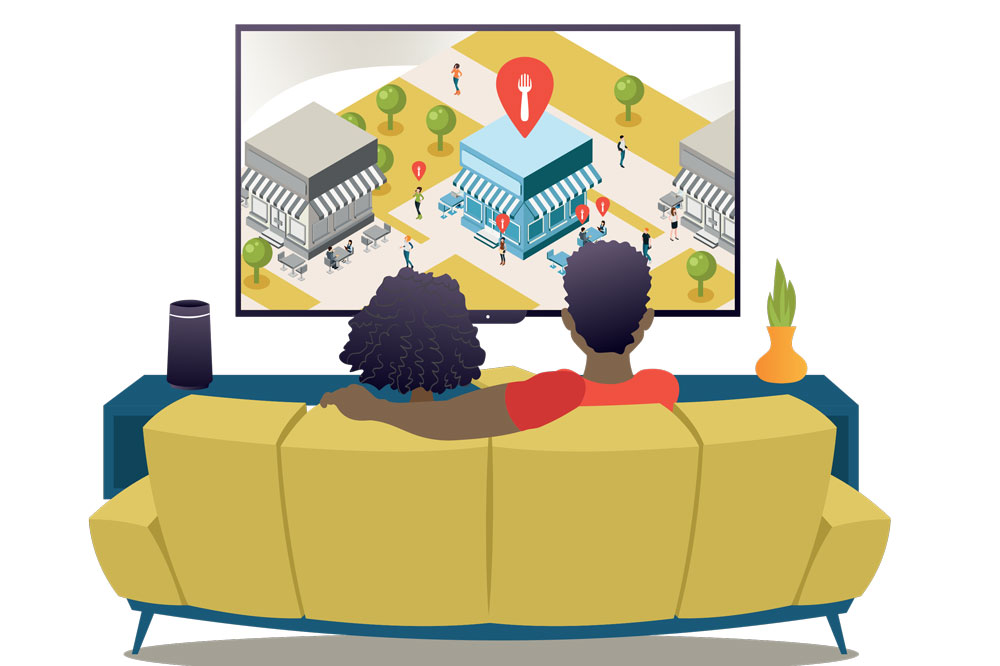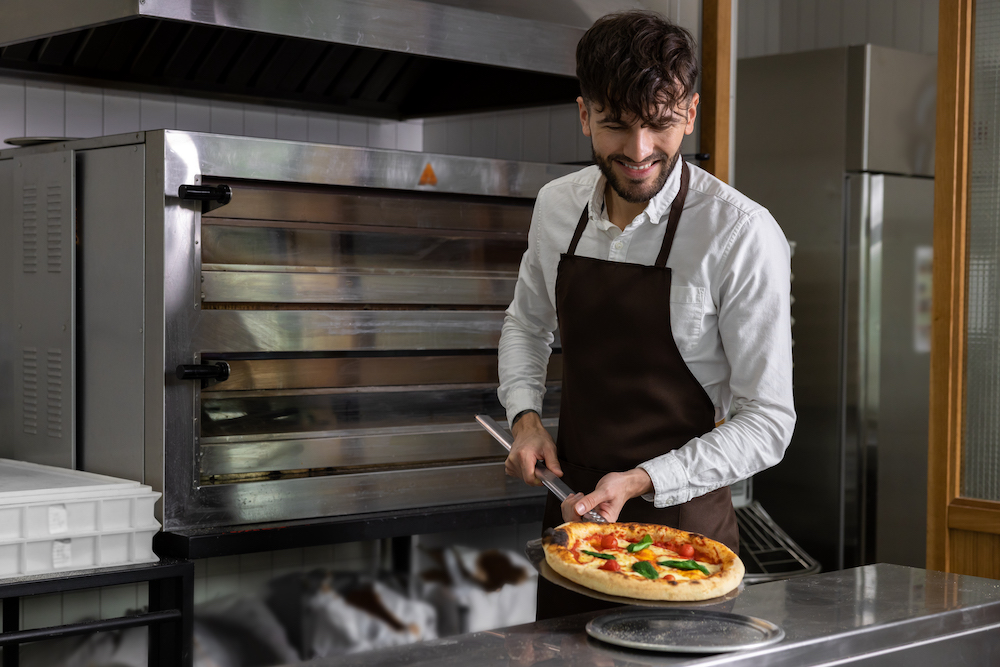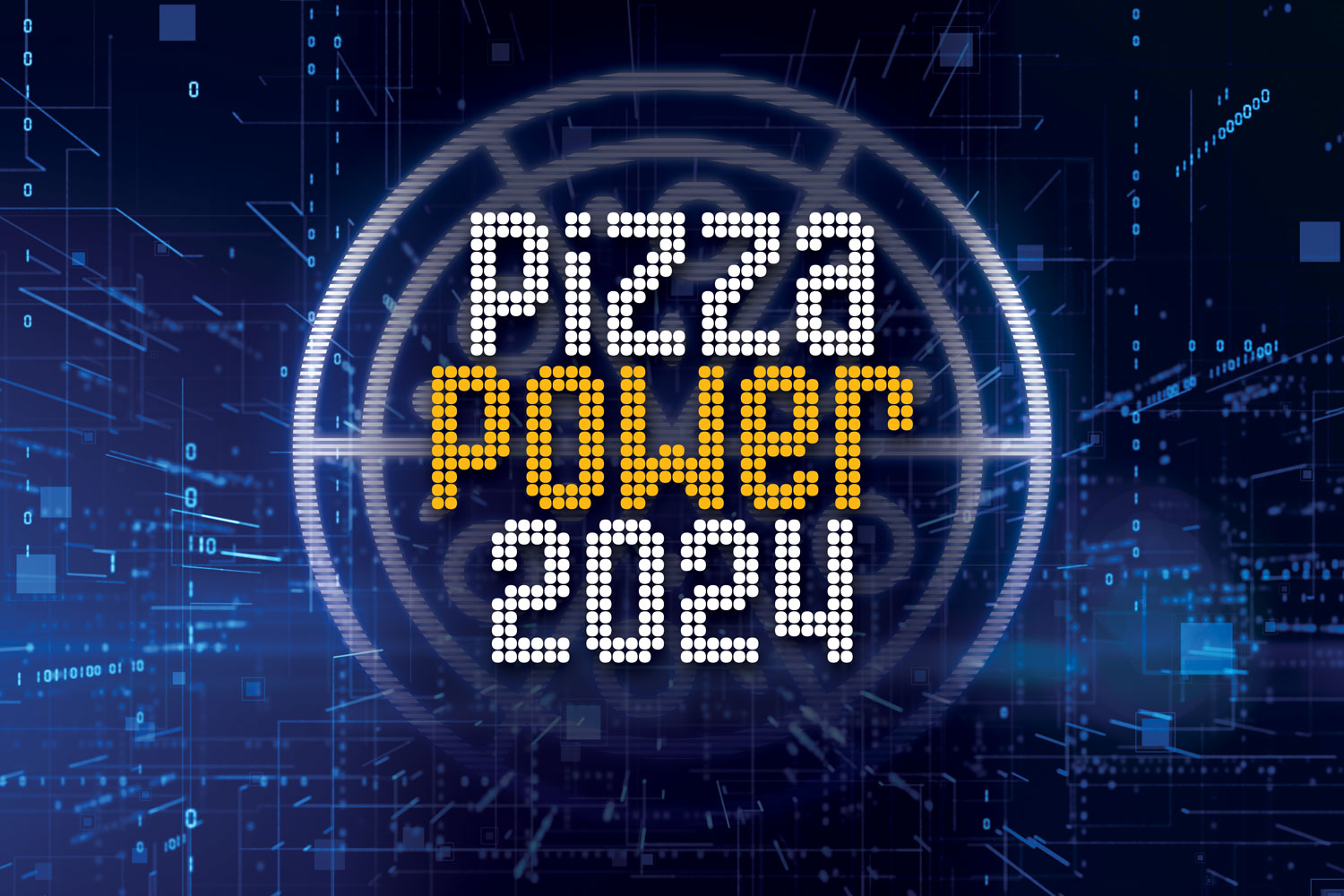By Tracy Morin
Have you ever used geofencing to market your pizzeria? Or is your first reaction a blank stare when you hear the word “geofencing”? If it’s the latter, don’t worry—you’re not alone. To demystify this tech-driven marketing tool, we wrangled a couple of mobile marketing experts who can explain its workings—and, if you’re already using this tactic, how to get the most out of it.
Step 1: Learn The Lingo
Bob Bentz, president of Purplegator, a mobile marketing agency based in Berwyn, Pennsylvania, notes that learning the definitions of the various terms that are used in mobile and digital marketing can help a pizzeria target the right audience. Here are some keywords to know:
Geolocation: This is the trading area for your pizza restaurant. Normally, it’s about a three- to seven-mile radius from your location.
Geofencing: A geofence enables you to bid more aggressively to show your ads to consumers in a particular area of the geolocation. Consider it a sub-geo of the overall geolocation. For instance, you could geofence the local college campus, since college students are more likely to purchase your products.
Geotarget: The geotarget refers to the people in the geolocation who are most likely to purchase your product. If you are marketing cheesesteaks, you might define the market as males ages 13 to 34, who are less concerned with calorie counts. If you are advertising salads, you may wish to target moms or females ages 35 to 49.
Geo-conquesting: This is the sexiest part of mobile marketing. With geo-conquesting, you can target mobile devices down to the address level. A logical address to geo-conquest would be the competing pizza shops in your trading area. Also, you might geo-conquest the hotels in your area, because you know those people don’t have the option to eat at home.
With geo-conquesting, you can either do a “lookback,” which can give you the mobile devices found at a competing location for up to six months prior, or you can define the audience in real time, known as “micro-proximity.” For example, perhaps there is a trade show in your area—you’d want to target those out-of-towners while they are in your area, but there’s no use trying to reach them once they go back home!
Related: Restaurant robots dominate 2023 Kitchen Innovation Awards
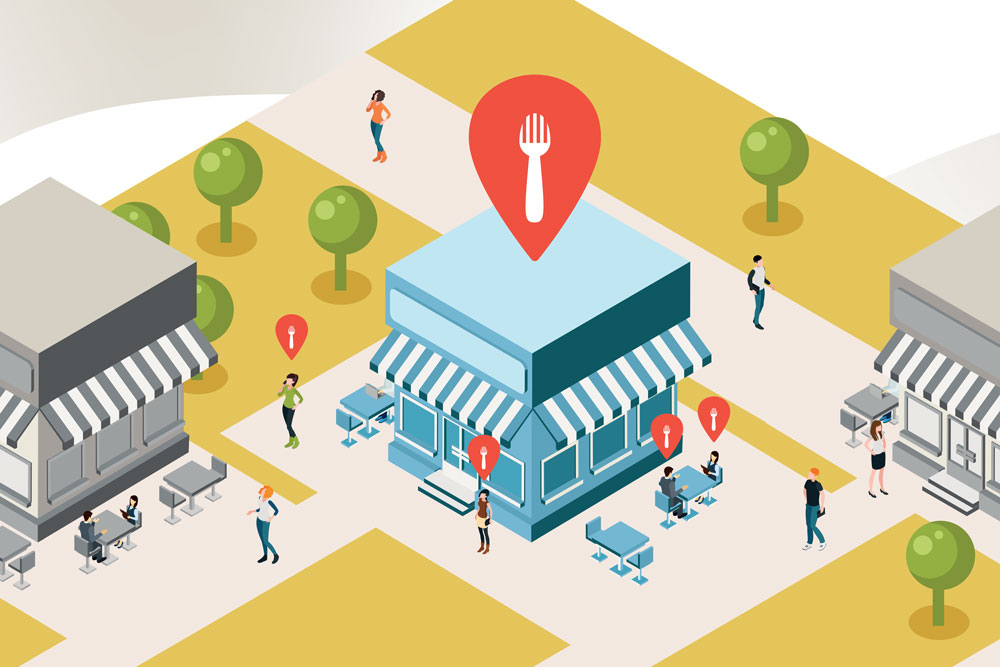
With geofencing, you can target the mobile devices of customers visiting your competitors’ restaurants and feed your ads to them.
Step 2: Explore How It Works
Now that you know the lingo, let’s dive deeper. Nicole Levin, director of sales at RestaurantGeofencing.com in Annapolis, Maryland, offers a quick rundown of some benefits of geofencing and how it works:
Target competitors, employers, points of interests, local neighborhoods and more.
Imagine Jane, your ideal customer, walking into your competitor’s location with her GPS-equipped smartphone during her lunch hour. Now you’ve captured her mobile ID and can politely steal her away by showing mouthwatering pizza content across all of her devices.
Serve Jane mobile ads, video ads and audio ads.
Now that Jane has walked into your target zone, not only is she eligible to receive mobile banner ads on the apps she uses, but as she returns home and her phone connects to the internet via her home network, she opens a portal to all of her other devices, including tablets, desktops and streaming televisions.
Watch your pizzeria’s walk-ins surge.
Jane is out and about the next day. As her lunch hour approaches, she remembers seeing your ad last night as she caught up with her favorite reality show on streaming TV. Jane decides to try out your pizzeria, which she has never heard of before. As she walks into your physical location, her mobile ID will register her as a new customer acquired. You’ll then be able to target her with your appetizing banner ads and 15- to 30-second unskippable OTT/CTV advertisements.

RestaurantGeofencing.com
One of the best facets of geofencing marketing is that you can determine how many consumers saw your ad and then showed up at your pizzeria.
Step 3: Track Customers
Bentz notes that one of the best facets of geofencing marketing is that pizzeria owners can know its success rate. “Here’s how: You can set up your own store with geo-conquesting, meaning you’ll know the mobile devices that have visited your pizzeria location,” he explains. “We then match that to the mobile devices that have been served an ad, and we can determine how many consumers saw your ad and then showed up at the pizzeria. This is known as a foot traffic report.”
Bentz adds that, while a foot traffic report is great, it doesn’t tell the entire story. For example, if somebody sees your ad and then phones in an order for delivery, he will never show up at the store for pickup—so you won’t be able to track that sale back to the ad campaign.
Related: Why your pizzeria should offer a pay-at-the-table option
Levin agrees that tracking customers through geofencing is a major benefit, since it’s uniquely local—you can microtarget the right audience for your pizzeria, geofencing any location of your choice, including local restaurants (such as your competitors), office buildings, neighborhoods, and even local events. “It can be difficult to track the value of restaurant marketing, and that’s why geofencing for restaurants and pizzerias is so effective,” Levin says.
“To understand how geofencing works for tracking,” Levin adds, “we need to define a couple keywords: target zones and conversion zones.”
Target zones are virtual geofences traced around an area where your pizzeria wants to target customers visiting another physical location (e.g., a competitor restaurant, a venue, a specific part of town, etc.). When the customer enters the target zone, he will then receive your restaurant’s ads on his mobile device. And, upon arriving home, he will then be eligible to receive ads via his other connected devices as his mobile phone connects to his Wi-Fi network.
While some Americans might find geofencing a bit scary—because of all the data that marketers can capture—you’re really just taking advantage of systems that are already in place.
Conversion zones are the most powerful tool for tracking online to offline conversions in mobile restaurant advertising. By tracing a virtual conversion zone around a physical location, restaurant marketers can measure the amount of physical traffic to the location from any customers who have seen their ad. Essentially, the physical location of your restaurant serves as the ultimate conversion zone, as this marketing aims to increase walk-ins to your location.
“In simpler terms, the target zones are the geofences you set up to capture your ideal customers, and the conversion zone is the physical location of your pizzeria,” Levin says. “If the geofencing company you use provides a report with statistics on your geofences, you will be able to see which customers viewed your display ad, television commercial, and/or audio commercial and then visited your pizzeria.”
Then there is a plethora of information to be received from capturing those customers, including:
Trade area (insights into home and work locations by density for your pizzeria, distance in miles from where visitors live in comparison to your pizzeria, and the percentage of visitors to your pizzeria by county, DMA, state or ZIP code)
Household characteristics (customer demographics by primary visitor, secondary visitor, and incidental visitors; marriage status, number of children, and number of persons in household; head of household’s age, ethnicity, income and education level; home type and ownership status, such as new mover or new homeowner; visitor trend graphs by week, day and hour of day)
Visitor behaviors (frequently visited places, such as the top five places that visitors to your pizzeria visited during a specified time frame).
Pizzeria Testimonials
“Felix and Oscar’s has been doing geotargeting advertising for the past eight years. During that time, we’ve run many successful geotargeting campaigns to reach our sports and pizza loving audiences in and around the Des Moines metro area. Our sales continue to increase year over year.” —Tommy Morgan, owner, Felix & Oscar’s, Des Moines, IA
“We run geolocation and geo-conquesting campaigns in our suburban Philadelphia town. We specifically target the three universities in our township and other restaurants. I know it works, because after the campaign is over, they show us a report of the foot traffic that came to our store from the people that were served the advertisements. With other advertising, I never know if it’s really working or not. This kind of advertising takes away that question.” —Robert Saionz, owner, Main Line Pizza, Wayne, PA
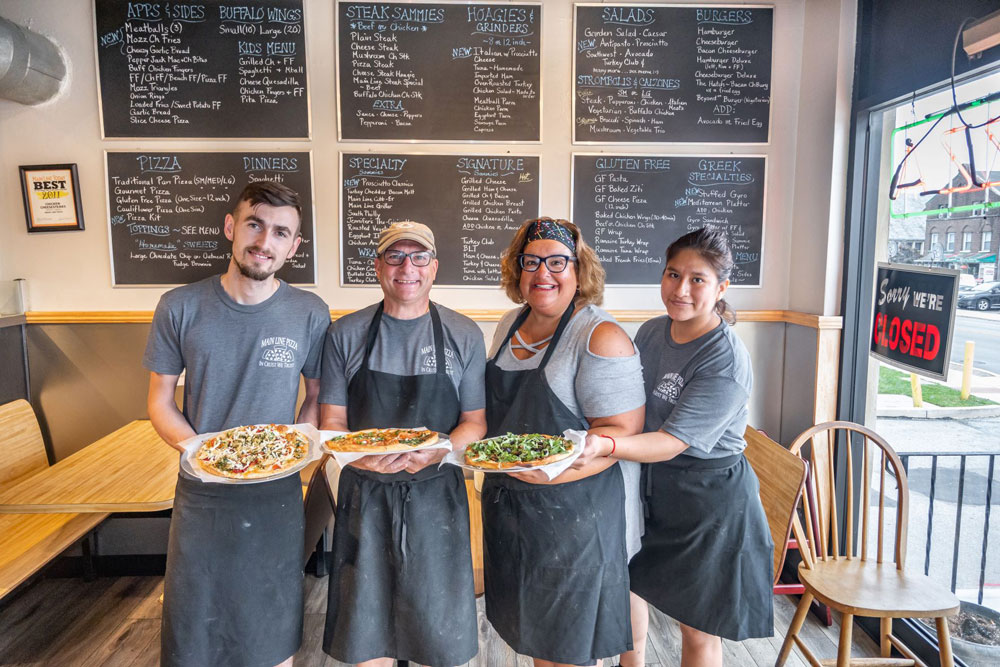
Main Line Pizza in Wayne, Pennsylvania, uses geofencing to target the mobile devices of potential guests at three nearby universities and other restaurants. Photo courtesy Purplegator.
Step 4: Overcome the Ick Factor
Bentz admits that many people ask how marketing agencies can obtain all of this information, and many Americans find the type of mobile targeting available today to be downright scary. But hey—you’re just taking advantage of systems that are already in place. “Mostly, this tracking is from apps that are on the consumers’ smartphones—like, if you have the Waze or Accuweather app, you are providing your location data to those sponsors,” Bentz explains. “This information is then sold to third-party data companies, which competent marketing agencies subscribe to.”
Bentz points to the old flashlight app that circulated a decade ago. There was no cost to download it, and there was no advertising on it. That’s because signing off on the app’s terms and conditions meant that you gave permission to the sponsor to track your geo-data—which was then sold to third-party data providers, who in turn sold it to advertisers.
Nowadays, this method of advertising is common, and that’s because it’s successful. “Regardless of how customers may feel, as a marketer, you should love geofencing marketing,” Bentz concludes. “It’s an extremely effective tool for your pizza restaurant.”
Tracy Morin is PMQ’s senior copy editor and the editor of PizzaVegan.com.

